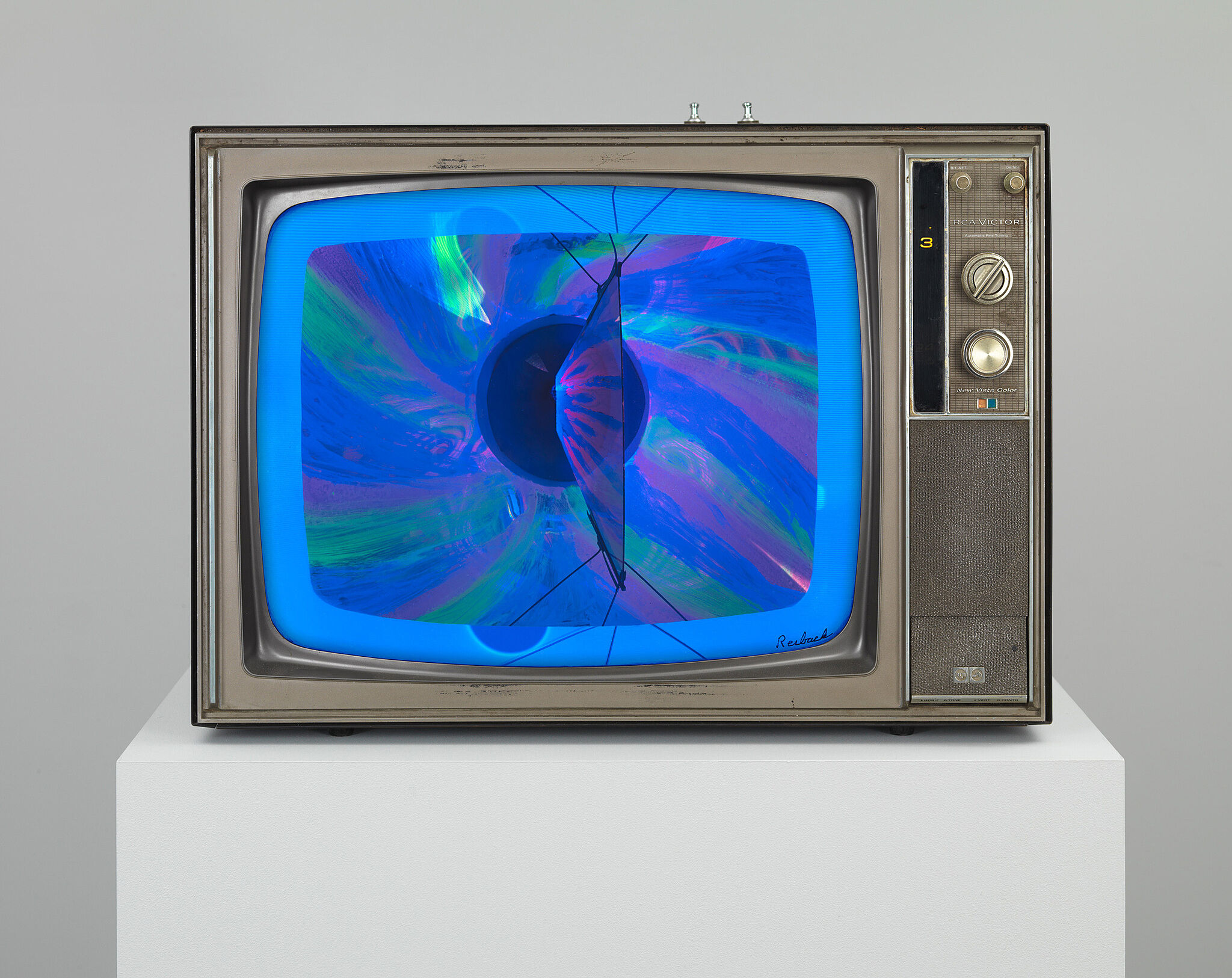Programmed: Rules, Codes, and Choreographies in Art, 1965–2018 | Art & Artists
Sept 28, 2018–Apr 14, 2019
Programmed: Rules, Codes, and Choreographies in Art, 1965–2018 | Art & Artists
Signal, Sequence, Resolution:
Liberating the Signal
5
The artists in this grouping use electronic or digital signals as their material but subvert the signals’ intended function, thereby “liberating” them from their original purpose. In doing so, they draw attention to the potential for signals to be carriers of instructions and visual information. Nam June Paik’s Magnet TV creates visual effects by distorting a television’s electronic signal, while digitally manipulated signals are an element of Cory Arcangel’s Super Mario Clouds for which the artist reprogrammed a Nintendo cartridge to erase the sound and all visual elements except for the clouds from the iconic video game. Signal and image resolution are explored by Jim Campbell, who programs LEDs to create cinematic and spatial images in both a room-sized installation and screen-based works.
Earl Reiback, Thrust, 1969*
To make the works in his series of modified televisions, Earl Reiback detached and emptied the cathode-ray tube (CRT) monitor of a TV, scraped the light-emitting phosphorus from the inside of the screen, then inserted sculptural elements and added back the phosphorescent paint. The altered televisions become sculptural forms, drawing attention to the space of the monitor and the creation of images through electronic signals, and also playing with our perception of how images are projected.
*Installed as part of an earlier version of the exhibition.
Artists
- Josef Albers
- Cory Arcangel
- Tauba Auerbach
- Jonah Brucker-Cohen
- Jim Campbell
- Ian Cheng
- Lucinda Childs
- Charles Csuri
- Agnes Denes
- Alex Dodge
- Charles Gaines
- Philip Glass
- Frederick Hammersley
- Channa Horwitz
- Donald Judd
- Joseph Kosuth
- Shigeko Kubota
- Marc Lafia
- Barbara Lattanzi
- Lynn Hershman Leeson
- Sol LeWitt
- Fang-yu Lin
- Manfred Mohr
- Katherine Moriwaki
- Mendi + Keith Obadike
- Nam June Paik
- William Bradford Paley
- Paul Pfeiffer
- Casey Reas
- Earl Reiback
- Rafaël Rozendaal
- Lillian Schwartz
- James L. Seawright
- John F. Simon Jr.
- Steina
- Mika Tajima
- Tamiko Thiel
- Cheyney Thompson
- Joan Truckenbrod
- Siebren Versteeg
- Lawrence Weiner

